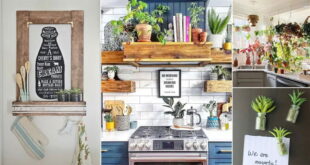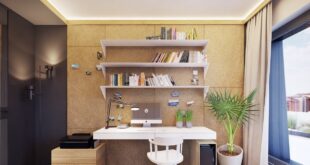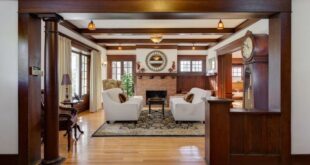The Alluring Appeal of Waterfall Edge Island Kitchens
The kitchen island has evolved from a simple workspace to the heart of the modern home. It’s a gathering place, a prep station, and often a design focal point. Among the various island styles, the waterfall edge design stands out for its seamless elegance and architectural presence. But what exactly is a waterfall edge island, and why has it become so popular?

Simply put, a waterfall edge island is a countertop that extends vertically down the sides of the cabinet, meeting the floor (or a slightly recessed base) in a continuous, unbroken line. This creates a ‘waterfall’ effect, visually connecting the horizontal surface with the vertical plane. This design element adds a touch of sophistication and visual drama to any kitchen, instantly elevating its aesthetic appeal.
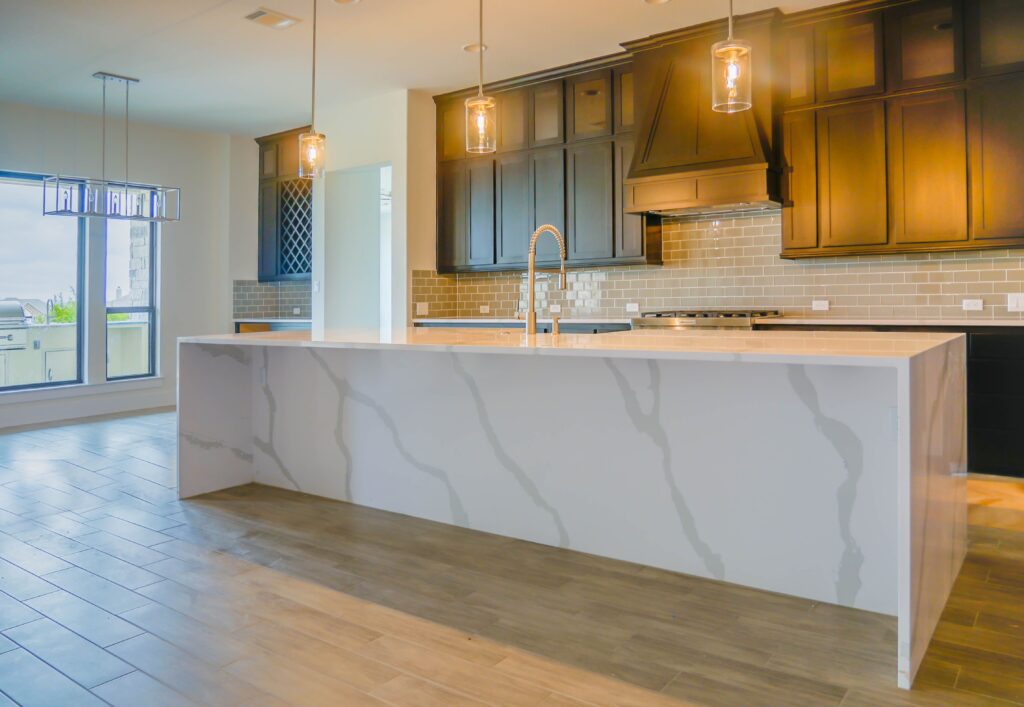
But beyond its visual appeal, the waterfall edge offers several practical benefits. It provides a clean, contemporary look that can complement a wide range of kitchen styles, from minimalist modern to transitional and even some carefully executed rustic designs. It also helps to protect the cabinet sides from everyday wear and tear, spills, and bumps, ensuring the longevity of your kitchen investment. Furthermore, the continuous surface is easier to clean and maintain than traditional countertops with exposed cabinet edges.
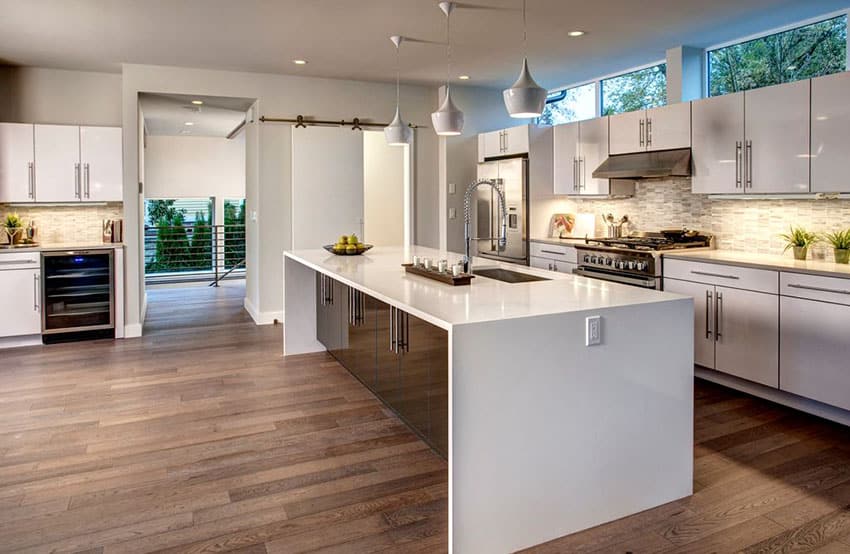
Why Choose a Waterfall Edge Island?
The decision to incorporate a waterfall edge island into your kitchen design is a significant one. Here’s a closer look at the key advantages:
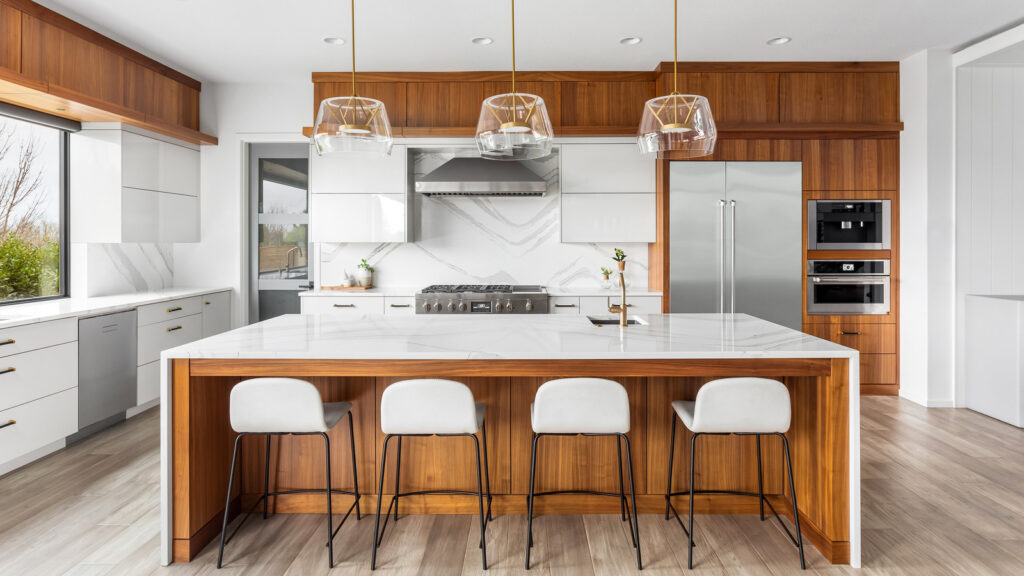
- Enhanced Aesthetics: The waterfall edge creates a sleek, modern, and luxurious look. It adds a sense of sophistication and drama that can transform your kitchen into a showpiece.
- Durability and Protection: The continuous surface protects the cabinet sides from damage, extending the life of your kitchen island. This is especially important in high-traffic areas.
- Easy Maintenance: With no exposed seams or edges, cleaning is a breeze. Simply wipe down the surface to remove spills and messes.
- Versatility: Waterfall edges can be incorporated into various kitchen styles and can be customized with different materials and colors.
- Increased Value: A well-designed kitchen with a waterfall edge island can increase the value of your home.
Exploring Materials for Your Waterfall Edge Island
The choice of material is crucial for achieving the desired look and functionality of your waterfall edge island. Here’s an overview of some of the most popular options:
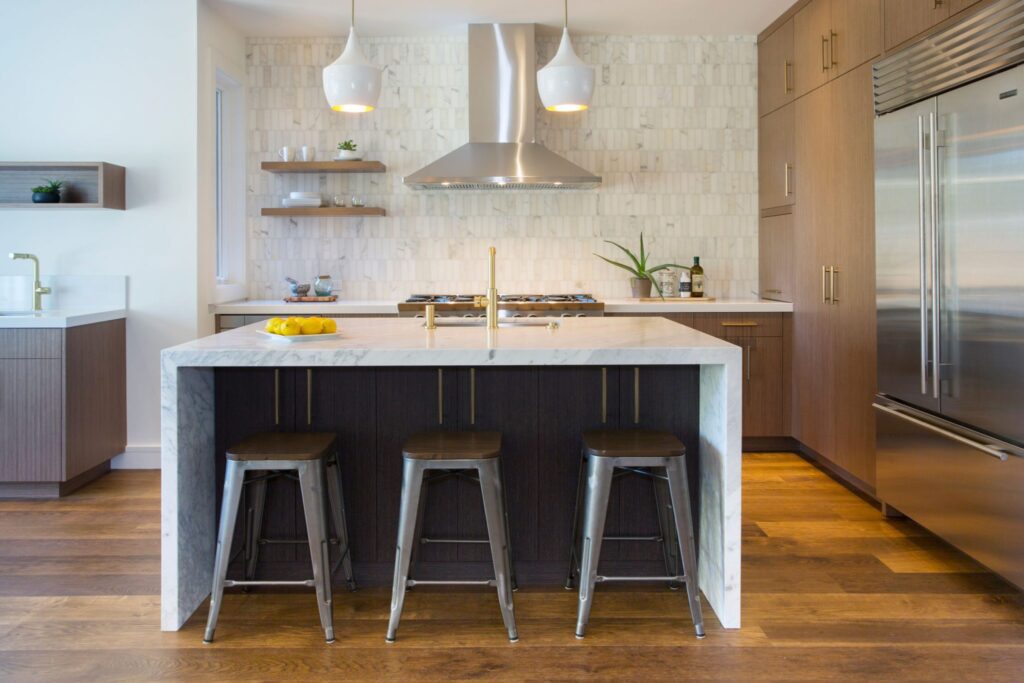
Granite: The Timeless Classic
Granite is a natural stone known for its durability, heat resistance, and unique patterns. Each slab is one-of-a-kind, adding a touch of natural beauty to your kitchen. Granite is an excellent choice for high-use kitchens as it can withstand scratches, stains, and heat. However, it requires regular sealing to prevent staining from spills.
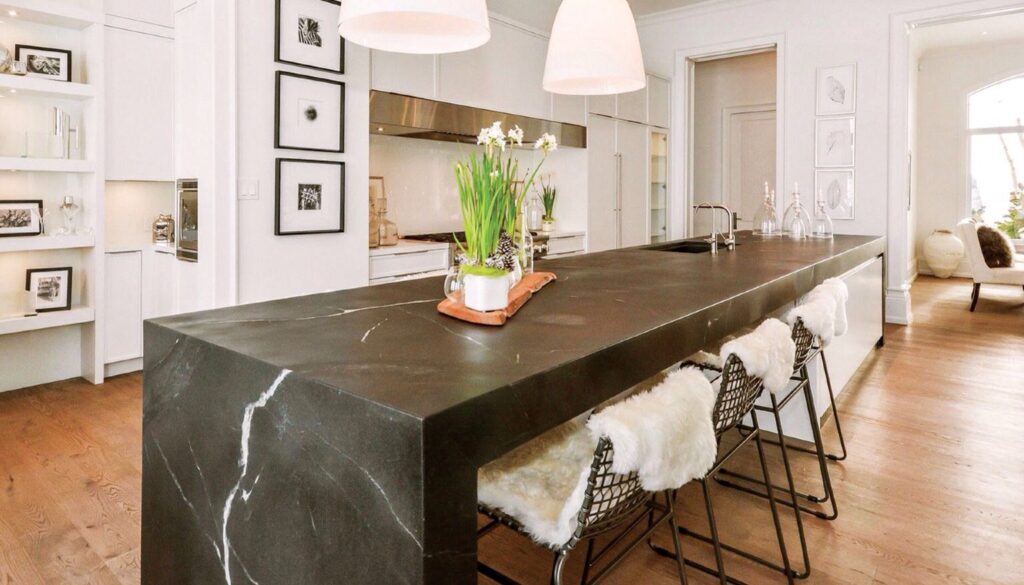
Pros: Extremely durable, heat resistant, unique patterns, adds value to your home.
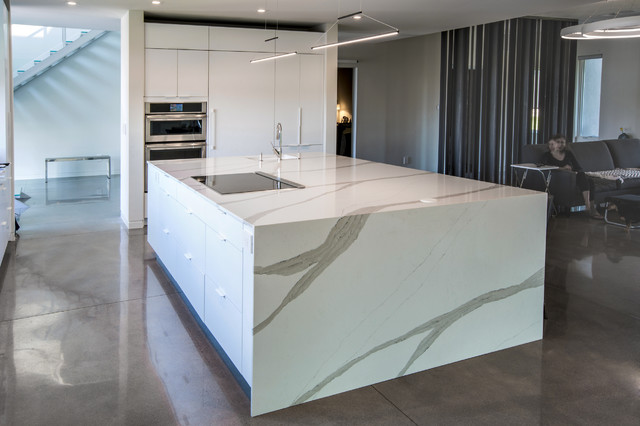
Cons: Requires sealing, can be expensive, limited color options compared to engineered stones.
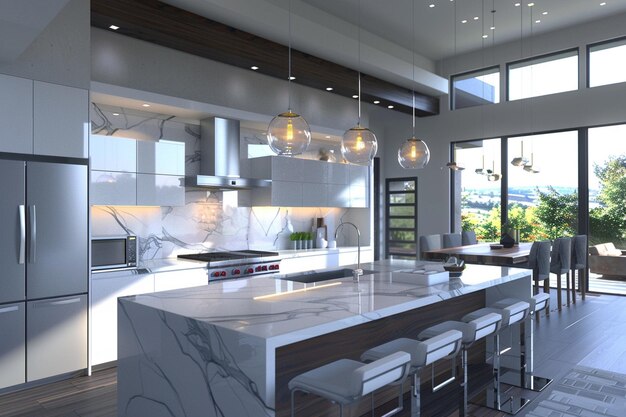
Quartz: The Engineered Marvel
Quartz is an engineered stone made from crushed quartz and resin. It offers a consistent color and pattern, making it a popular choice for modern kitchens. Quartz is non-porous, making it resistant to stains, scratches, and bacteria. It’s also relatively low-maintenance and doesn’t require sealing.
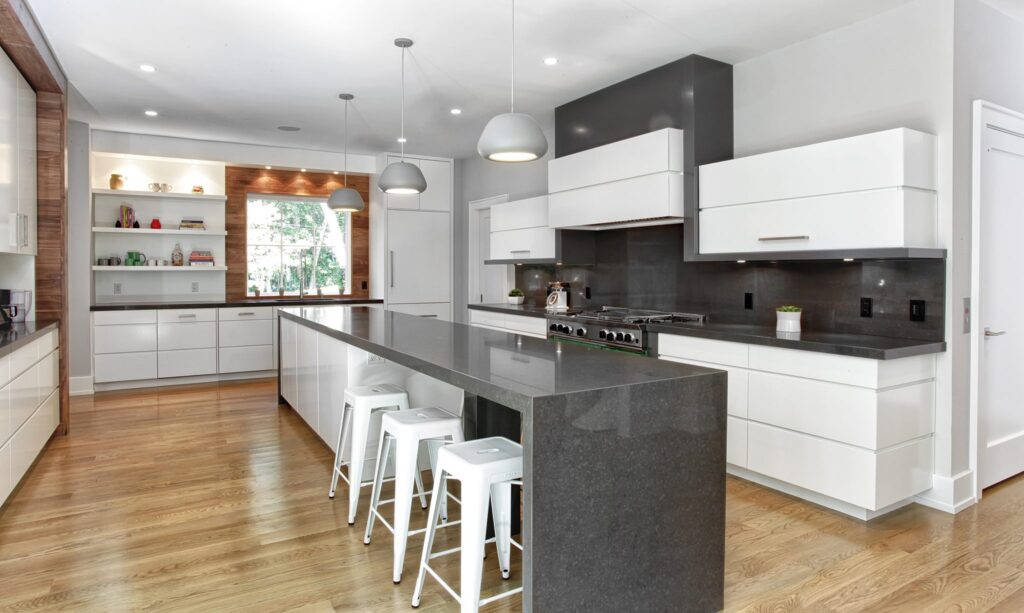
Pros: Non-porous, stain resistant, scratch resistant, low-maintenance, wide range of colors and patterns.
Cons: Not as heat resistant as granite, can be expensive.
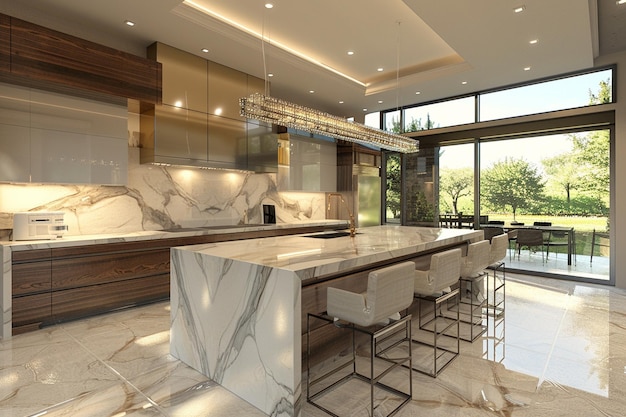
Marble: The Luxurious Statement
Marble is a natural stone prized for its elegant veining and luxurious appearance. It’s a softer stone than granite or quartz, making it more susceptible to scratches and stains. However, its beauty is undeniable, and it can add a touch of sophistication to any kitchen. Marble requires regular sealing and careful maintenance to preserve its appearance.
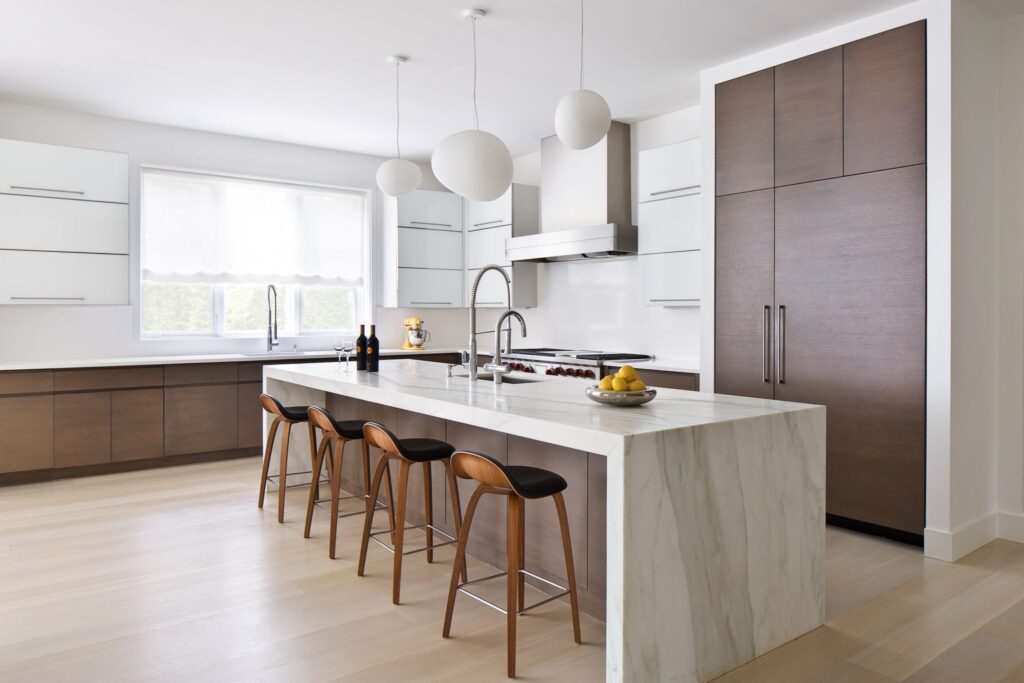
Pros: Luxurious appearance, unique veining, adds value to your home.
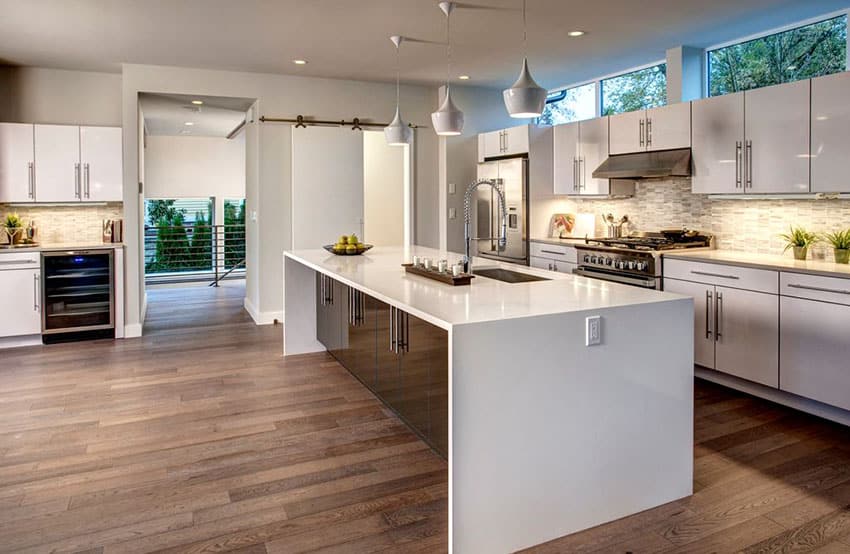
Cons: Susceptible to scratches and stains, requires regular sealing, can be expensive.
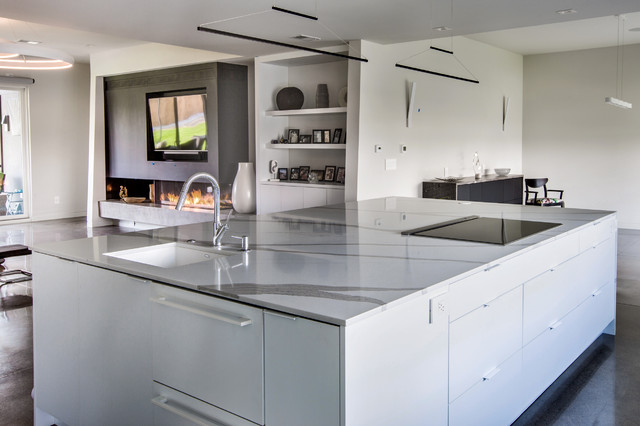
Concrete: The Industrial Chic Choice
Concrete countertops offer a modern, industrial aesthetic. They can be customized with various colors, textures, and finishes. Concrete is durable and heat resistant, but it’s also porous and requires sealing to prevent staining. It’s important to work with a skilled fabricator who can properly seal and finish the concrete to ensure its longevity.
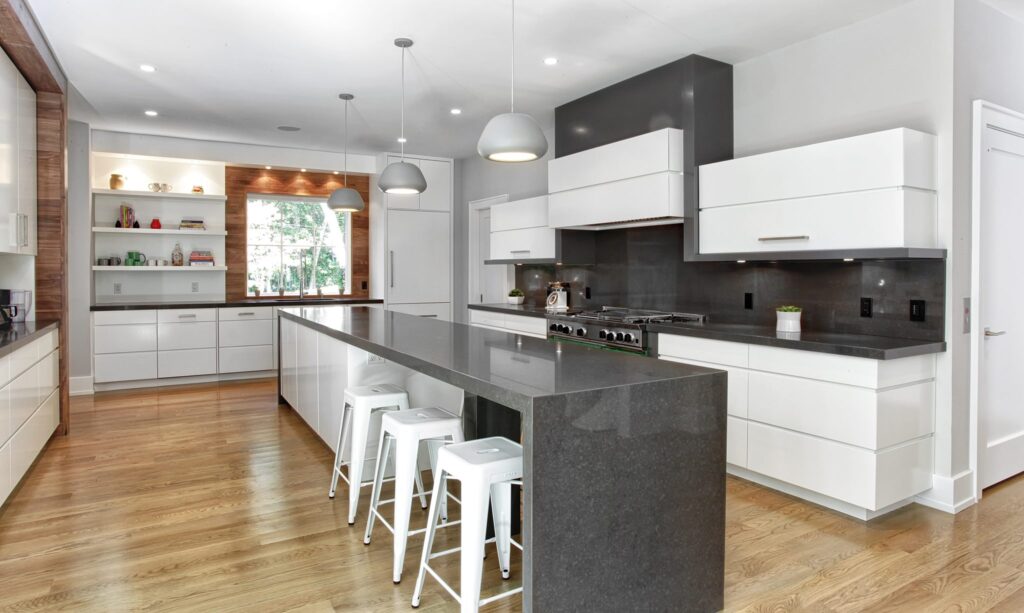
Pros: Customizable, durable, heat resistant, unique aesthetic.
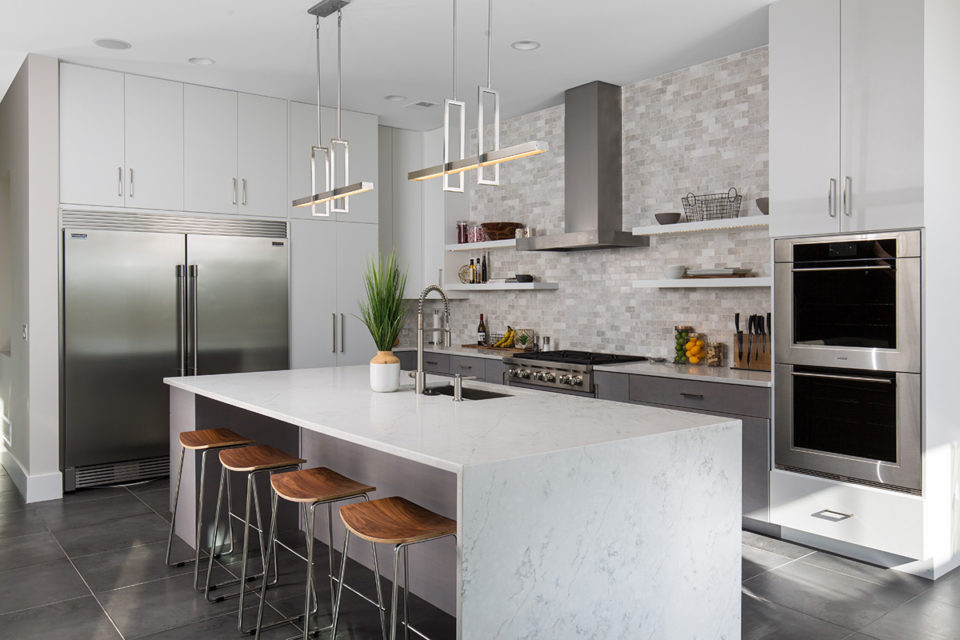
Cons: Porous, requires sealing, can be prone to cracking, can be heavy and require extra support.
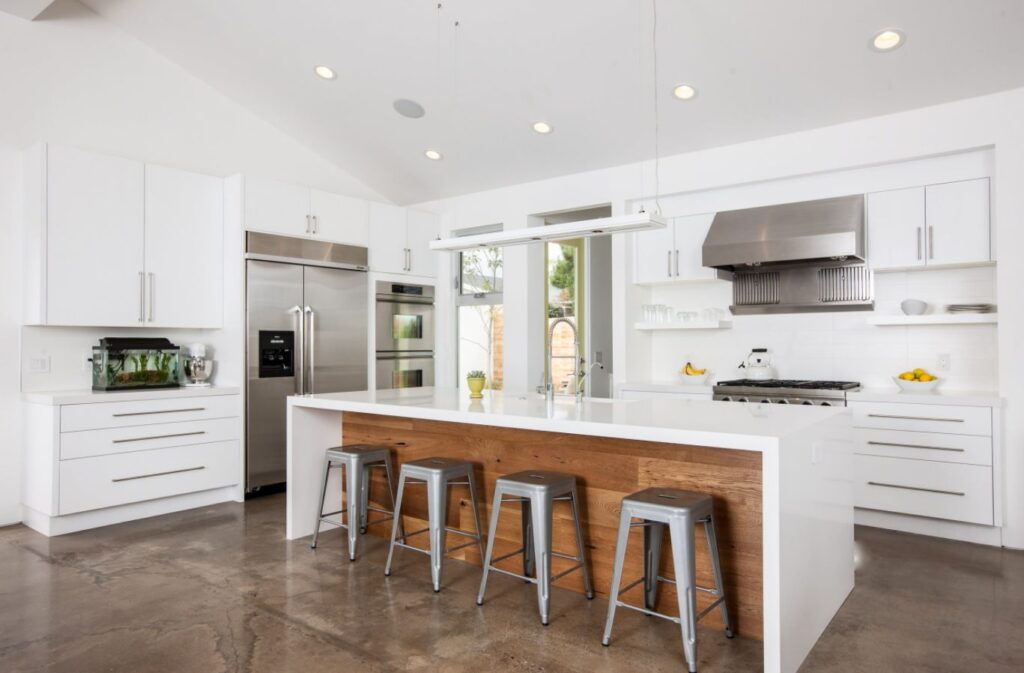
Wood: The Warm and Inviting Option
Wood countertops bring warmth and character to a kitchen. They can be made from various types of wood, such as maple, walnut, or oak. Wood countertops require regular maintenance, including oiling and sealing, to prevent water damage and staining. They are also more susceptible to scratches and dents than stone or engineered materials.
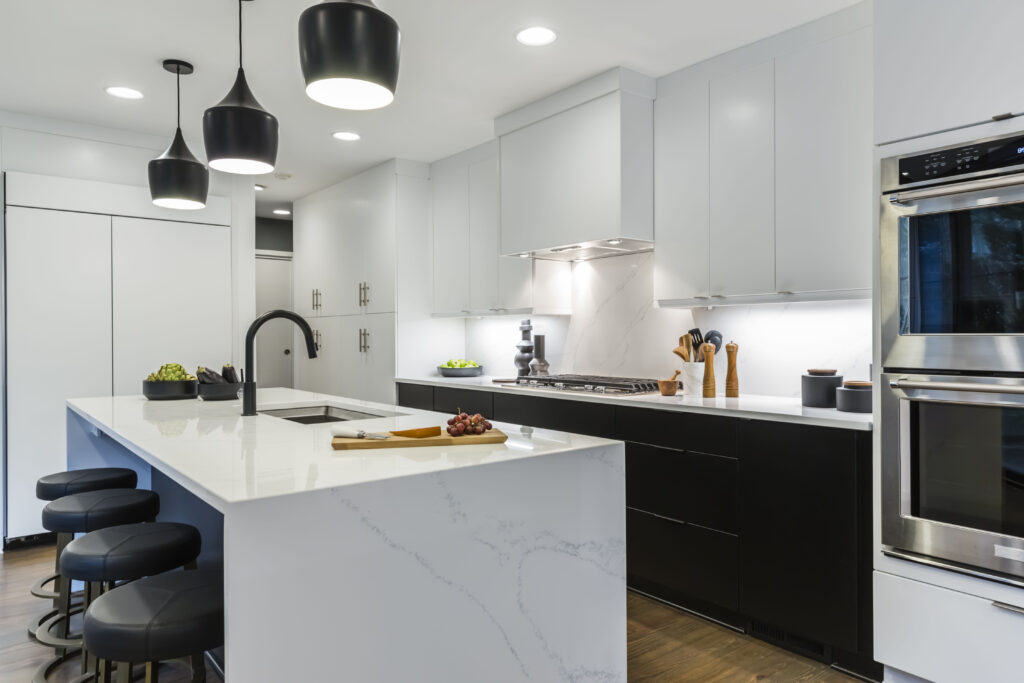
Pros: Warm and inviting, adds character to the kitchen, can be refinished.
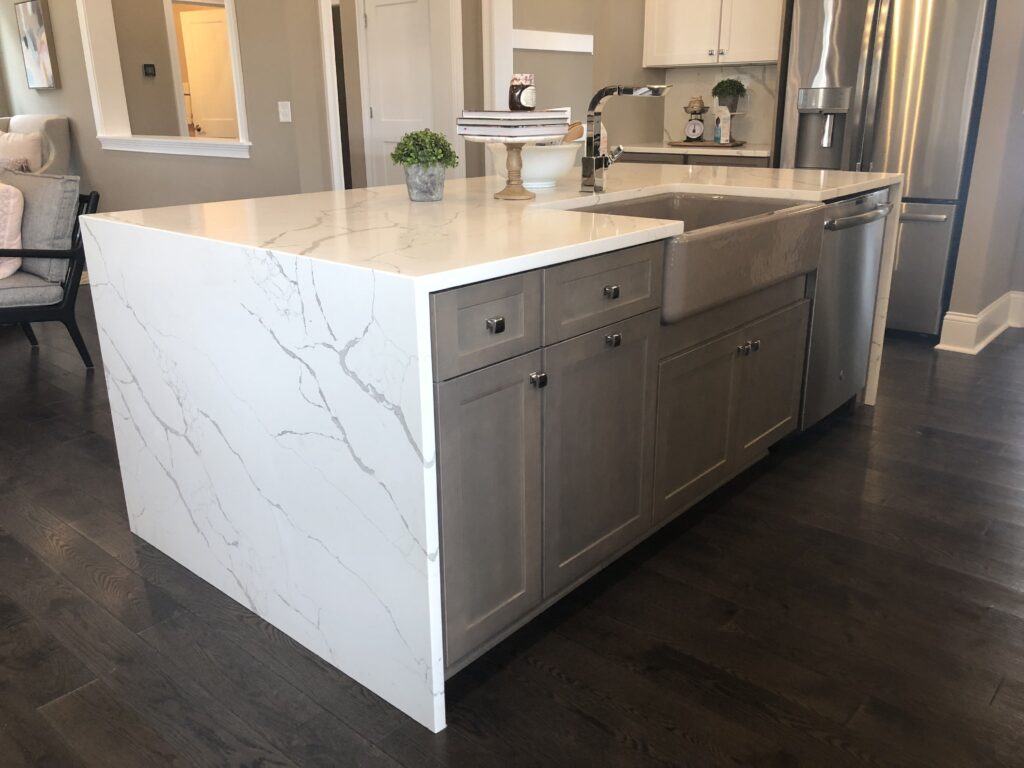
Cons: Requires regular maintenance, susceptible to scratches and water damage, not as durable as stone or engineered materials.
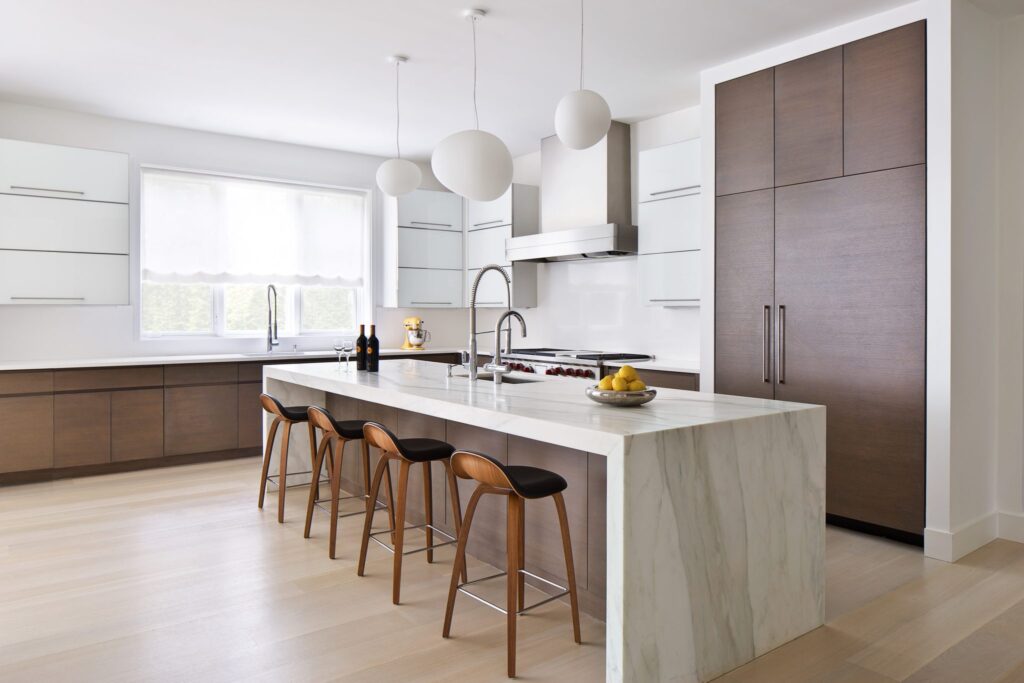
Other Materials to Consider
While granite, quartz, marble, concrete, and wood are the most popular choices, other materials can be used for waterfall edge islands, including:

- Solid Surface: An acrylic-based material that is non-porous and easy to clean.
- Laminate: A more affordable option that comes in a wide range of colors and patterns.
- Stainless Steel: A durable and hygienic option that is often used in commercial kitchens.
Designing Your Waterfall Edge Island: Key Considerations
Designing a waterfall edge island requires careful planning and attention to detail. Here are some key considerations to keep in mind:
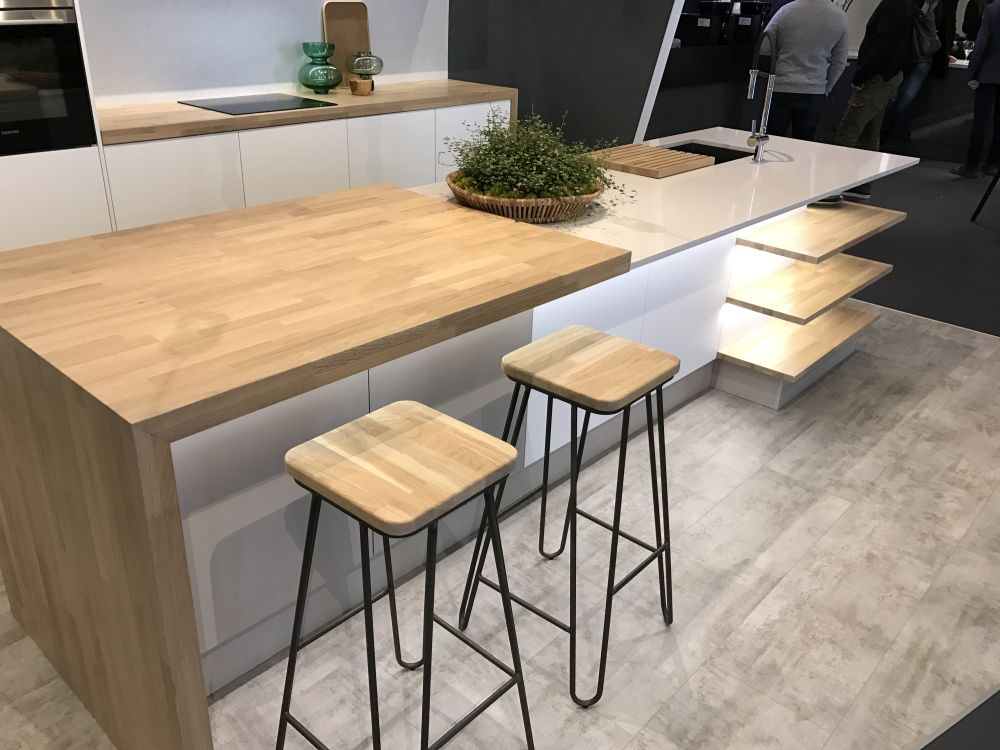
Size and Proportion
The size of your island should be proportionate to the size of your kitchen. A large island can overwhelm a small kitchen, while a small island can get lost in a large kitchen. Consider the available space and the functionality you need from your island when determining its size.
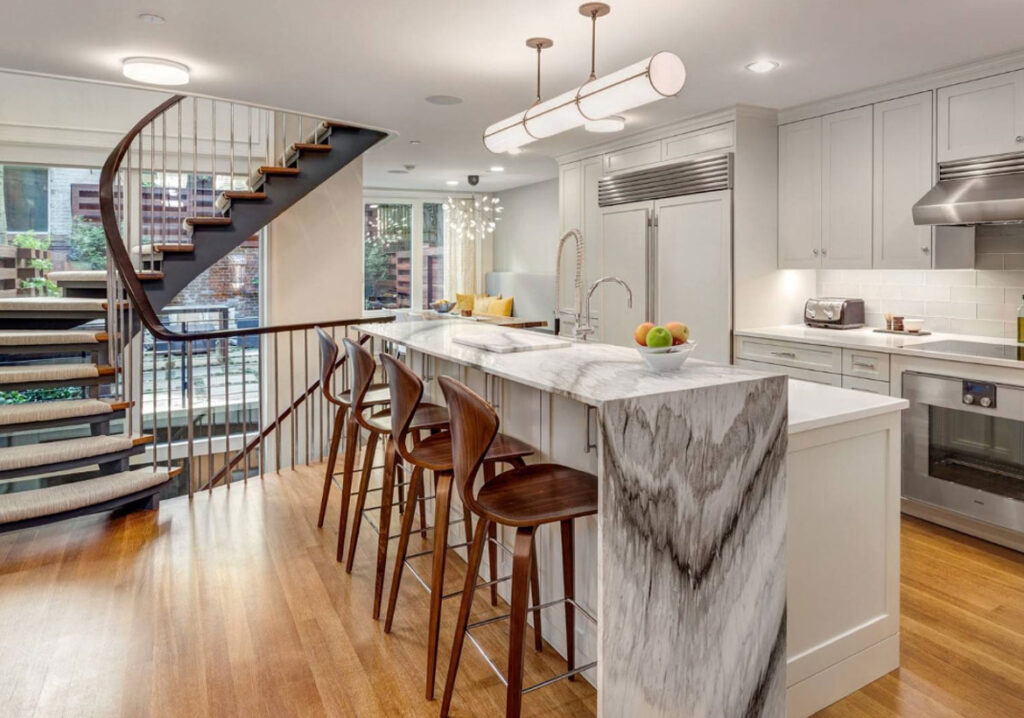
The height of the waterfall edge should also be considered. A standard countertop height is 36 inches, but you may need to adjust the height depending on your personal preferences and the height of your stools or chairs.
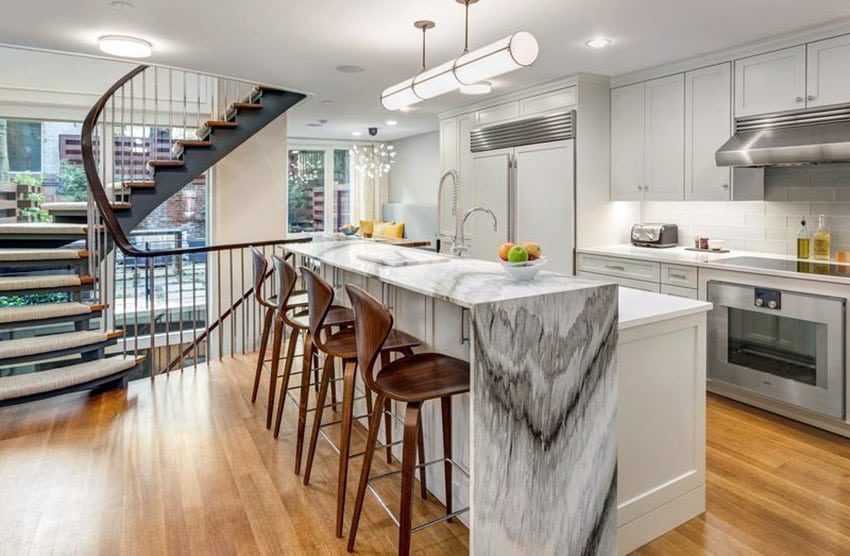
Placement and Layout
The placement of your island is crucial for creating a functional and efficient kitchen layout. Consider the work triangle (the distance between the sink, stove, and refrigerator) and ensure that the island doesn’t obstruct traffic flow. You should also allow ample space around the island for comfortable movement.

Think about how you plan to use the island. Will it be primarily a prep station, a dining area, or a combination of both? This will influence the placement of sinks, cooktops, and seating.
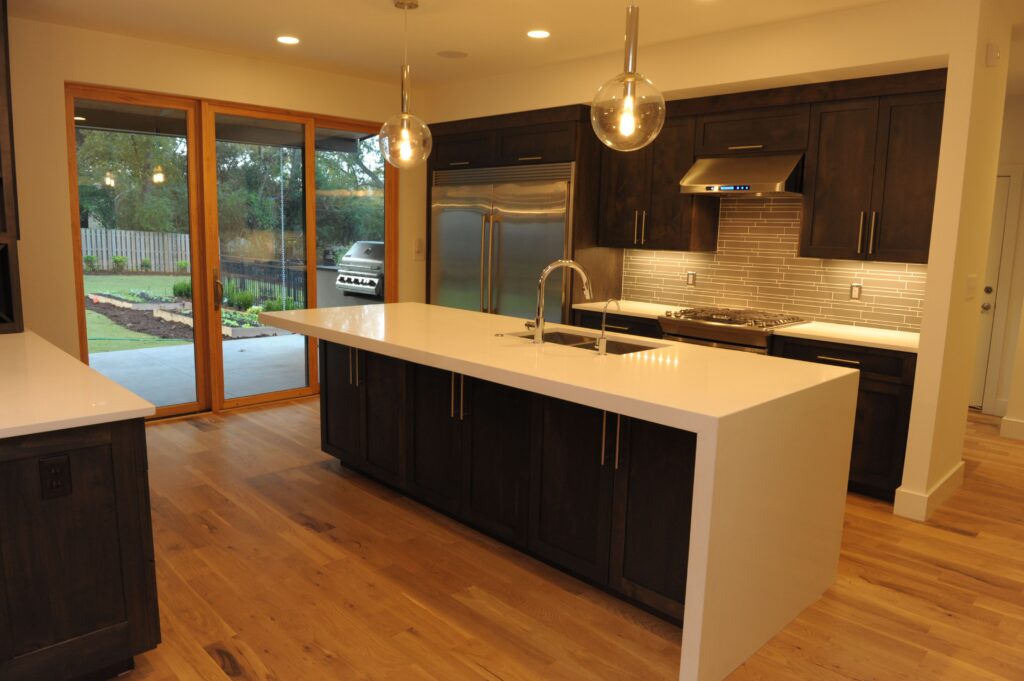
Cabinetry and Storage
The cabinetry beneath your waterfall edge island should be both functional and aesthetically pleasing. Consider incorporating drawers, shelves, and pull-out organizers to maximize storage space. You can also add decorative elements, such as open shelving or glass-front cabinets, to showcase your favorite kitchen items.
Ensure that the cabinetry complements the overall style of your kitchen and the material of your countertop. Choose hardware that coordinates with the other fixtures in your kitchen.
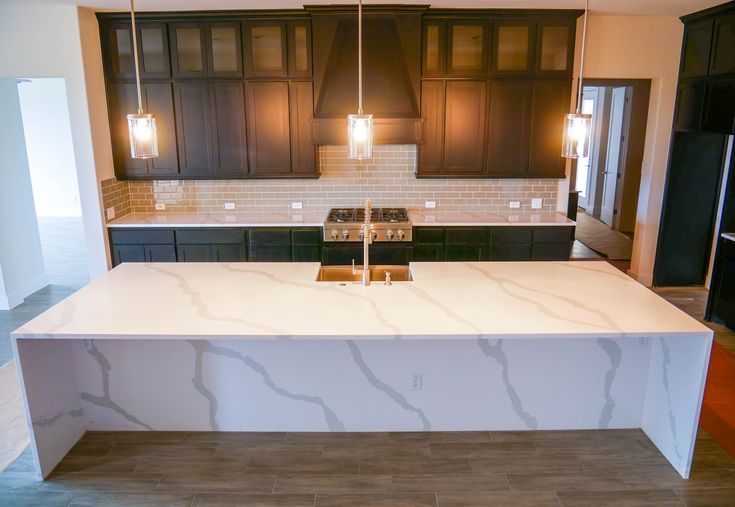
Lighting
Proper lighting is essential for creating a functional and inviting kitchen. Consider incorporating pendant lights above the island to provide task lighting for food preparation and dining. You can also add recessed lighting or under-cabinet lighting to illuminate the countertop and create a warm ambiance.
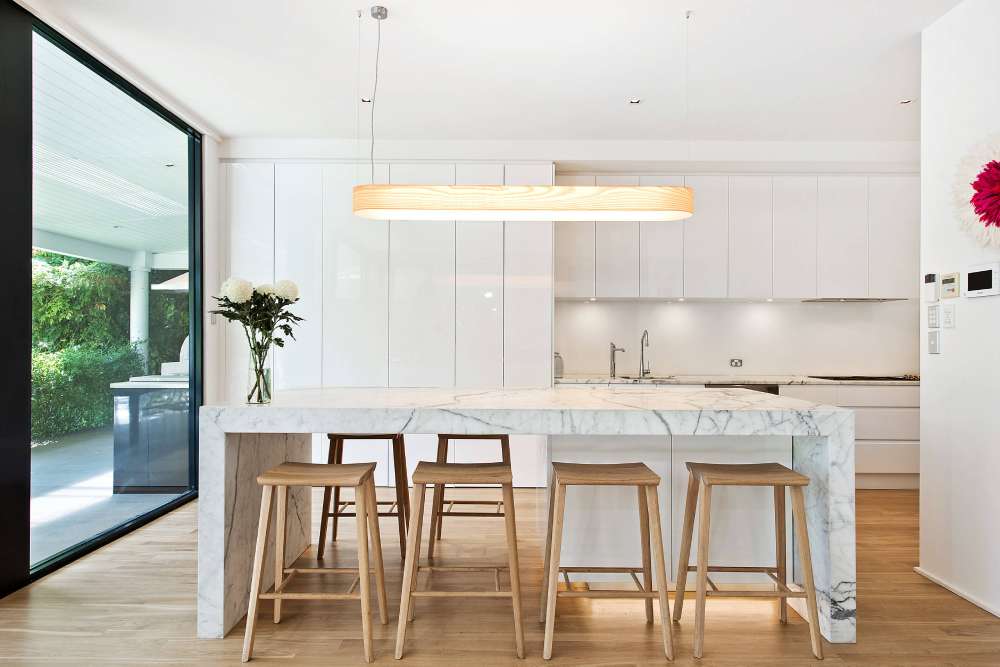
Choose lighting fixtures that complement the style of your kitchen and the material of your countertop. Dimmable lights allow you to adjust the brightness to suit different activities and moods.
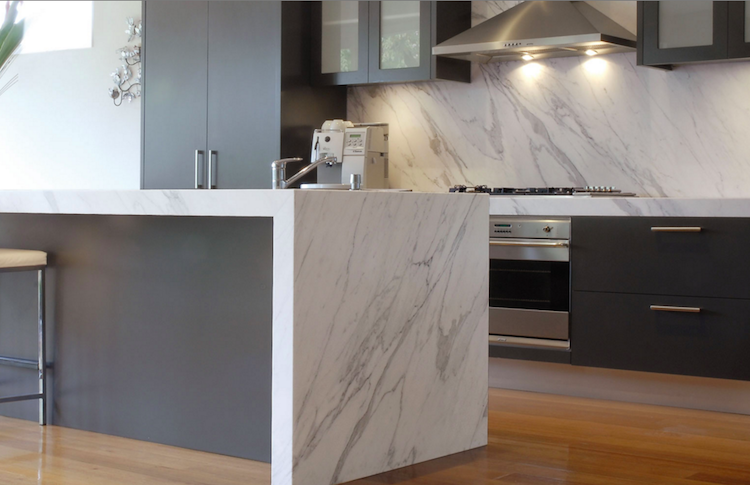
Seating
If you plan to use your island for dining or entertaining, consider incorporating seating. Bar stools or chairs can be placed along one or more sides of the island. Choose seating that is comfortable and complements the style of your kitchen.

The height of the seating should be appropriate for the height of the countertop. A standard countertop height of 36 inches requires bar stools that are 24-26 inches high. Counter-height seating is also an option for lower islands.
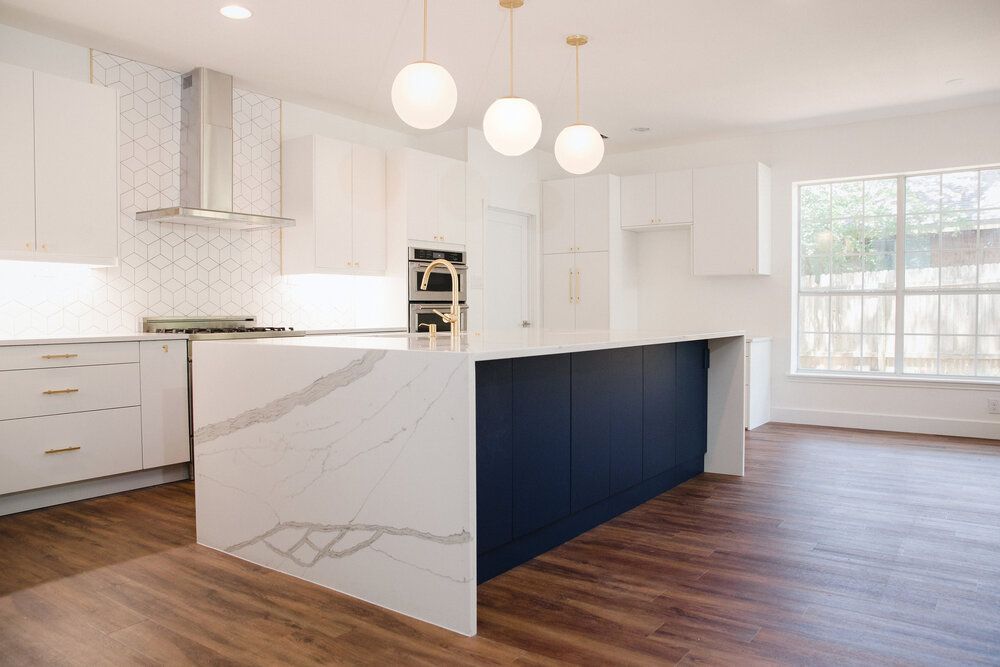
Waterfall Edge Styles: Finding the Perfect Fit for Your Kitchen
The beauty of the waterfall edge design lies in its adaptability. It can be tailored to suit a variety of kitchen styles, from sleek and modern to warm and traditional. Here are a few popular waterfall edge styles to consider:
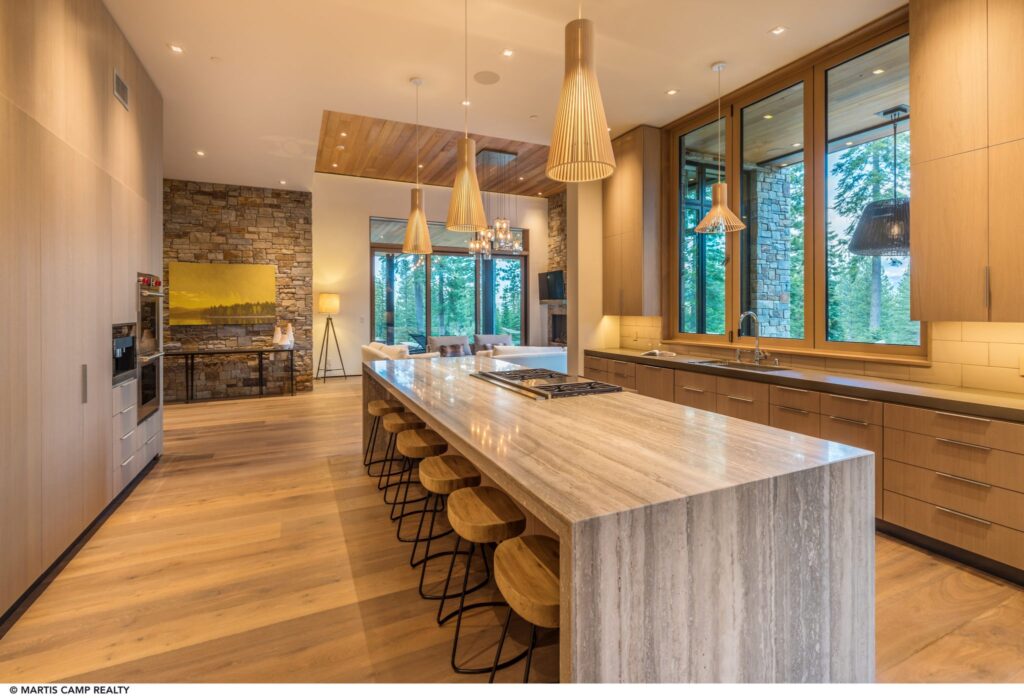
Full Waterfall Edge
This is the classic waterfall edge, where the countertop extends all the way to the floor on one or both sides of the island. It creates a clean, seamless look and is a popular choice for modern and contemporary kitchens.
Partial Waterfall Edge
In this style, the countertop extends partway down the sides of the island, stopping a few inches above the floor. This can be a good option if you want to showcase the cabinetry or create a more open feel.
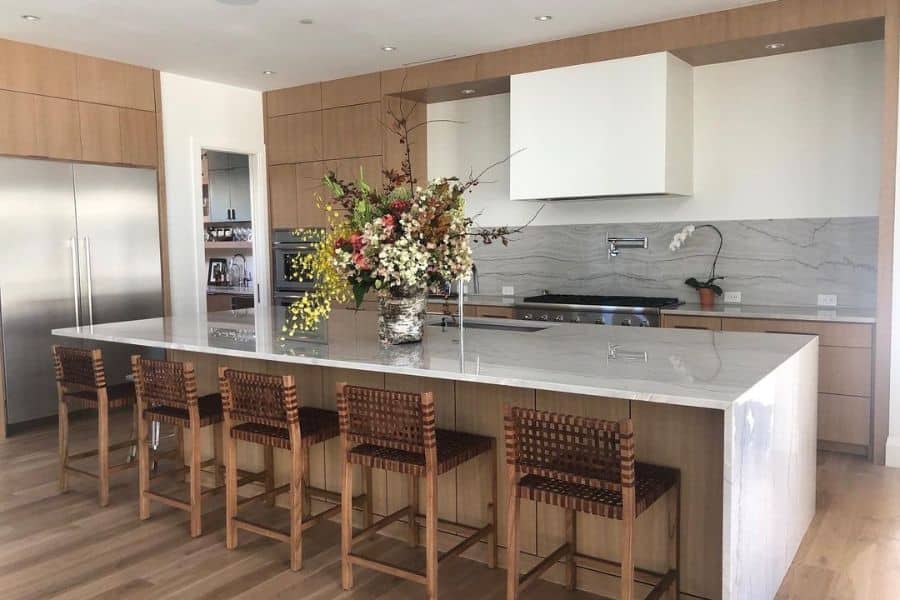
Double Waterfall Edge
A double waterfall edge features waterfall edges on both ends of the island. This creates a symmetrical and dramatic look that is perfect for large kitchens.
Mitered Waterfall Edge
A mitered waterfall edge involves cutting the countertop material at a 45-degree angle to create a seamless joint between the horizontal and vertical surfaces. This requires precise fabrication and installation but results in a clean and sophisticated look.
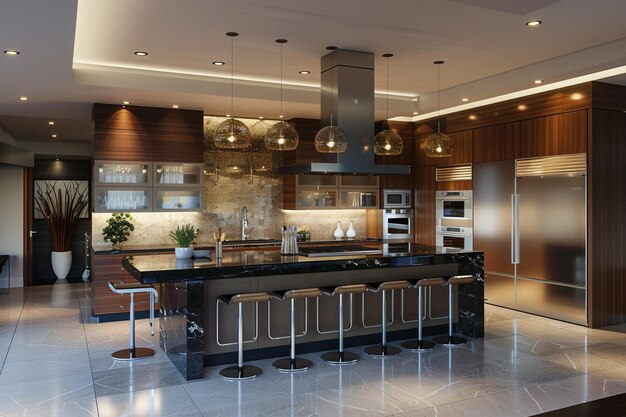
Waterfall Edge with a Reveal
This style features a small gap or reveal between the countertop and the cabinetry. This can add a touch of visual interest and create a more modern look.
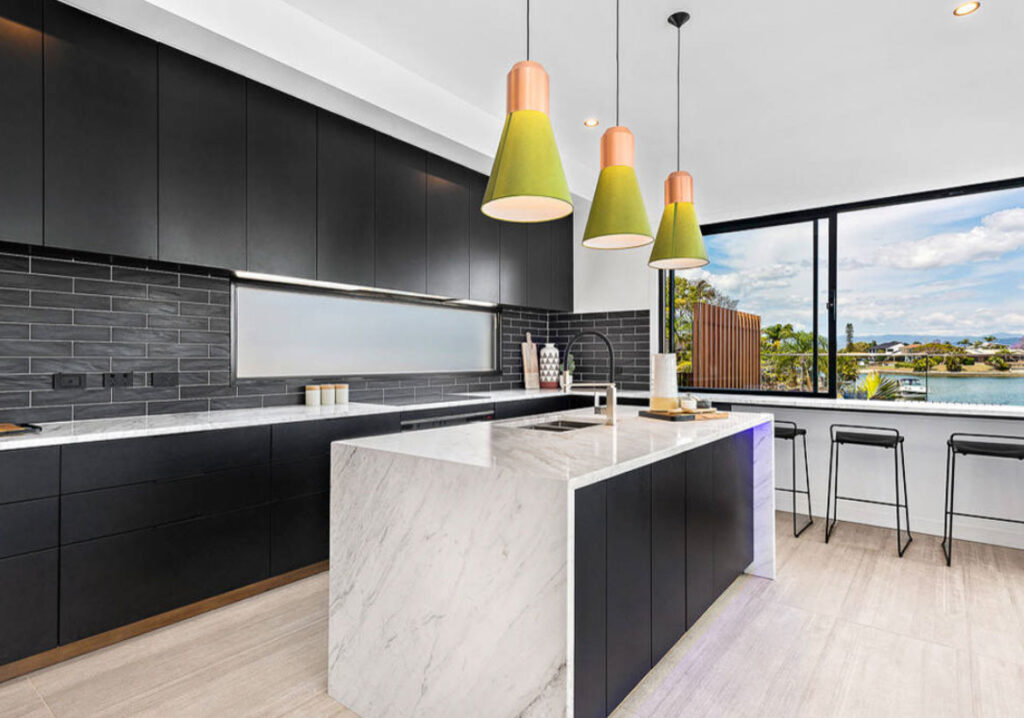
The Installation Process: Ensuring a Flawless Finish
The installation of a waterfall edge island is a complex process that requires expertise and precision. It’s essential to hire a qualified contractor who has experience installing waterfall edges. Here’s a general overview of the installation process:

- Measurement and Fabrication: The contractor will take precise measurements of your kitchen and fabricate the countertop to the exact specifications. This is a crucial step to ensure a perfect fit.
- Cabinet Installation: The cabinets beneath the island will be installed and leveled. This provides a stable base for the countertop.
- Countertop Installation: The countertop will be carefully placed on top of the cabinets. The waterfall edges will be aligned and secured to the cabinet sides using adhesive or mechanical fasteners.
- Sealing and Finishing: If the countertop is made of natural stone or concrete, it will be sealed to protect it from stains and water damage. The edges will be smoothed and polished to create a seamless finish.
It’s important to inspect the installation carefully to ensure that the countertop is level, the edges are aligned, and there are no visible seams or gaps.
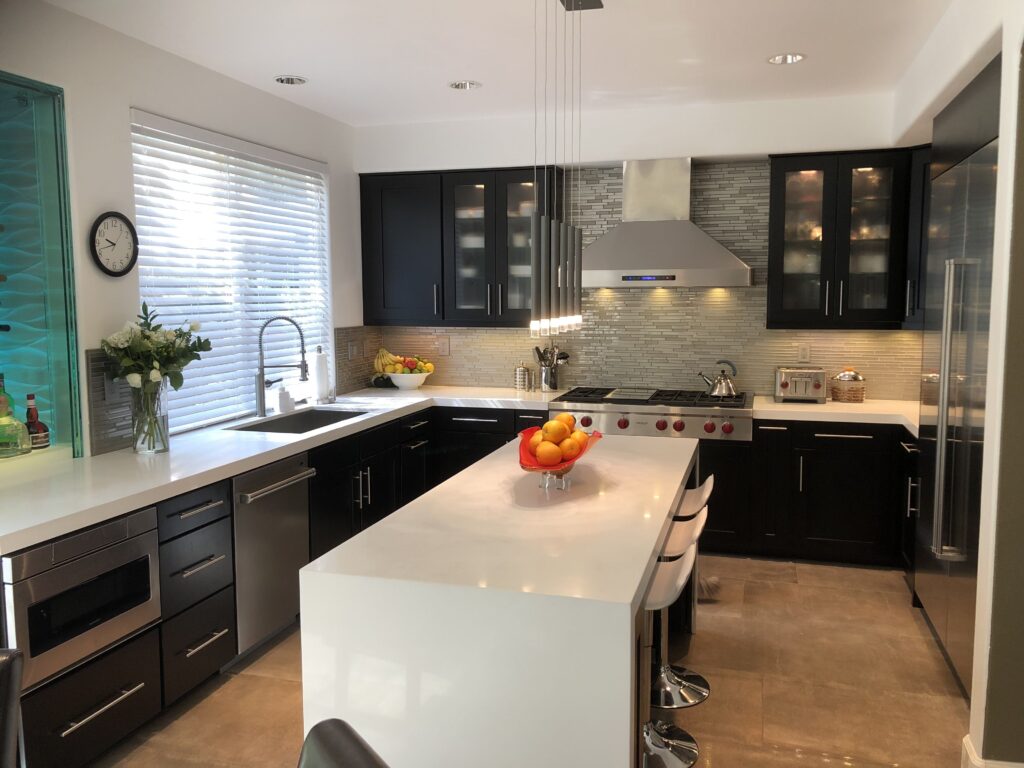
Maintaining Your Waterfall Edge Island: Preserving Its Beauty
Proper maintenance is essential for preserving the beauty and longevity of your waterfall edge island. Here are some tips for caring for different materials:
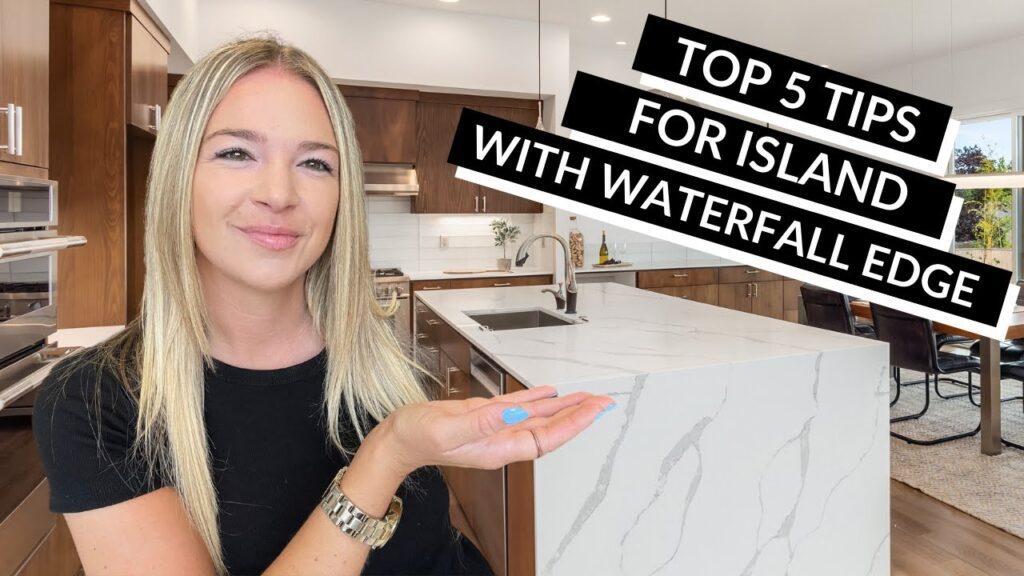
- Granite: Clean with a mild soap and water. Avoid using abrasive cleaners or harsh chemicals. Seal regularly to prevent staining.
- Quartz: Clean with a mild soap and water. Avoid using abrasive cleaners or harsh chemicals. Quartz is non-porous and doesn’t require sealing.
- Marble: Clean with a pH-neutral cleaner. Avoid using acidic cleaners or harsh chemicals. Seal regularly to prevent staining. Wipe up spills immediately to prevent etching.
- Concrete: Clean with a mild soap and water. Avoid using acidic cleaners or harsh chemicals. Seal regularly to prevent staining.
- Wood: Clean with a damp cloth. Avoid using excessive water. Oil or wax regularly to protect the wood from drying out.
Always follow the manufacturer’s instructions for cleaning and maintenance.
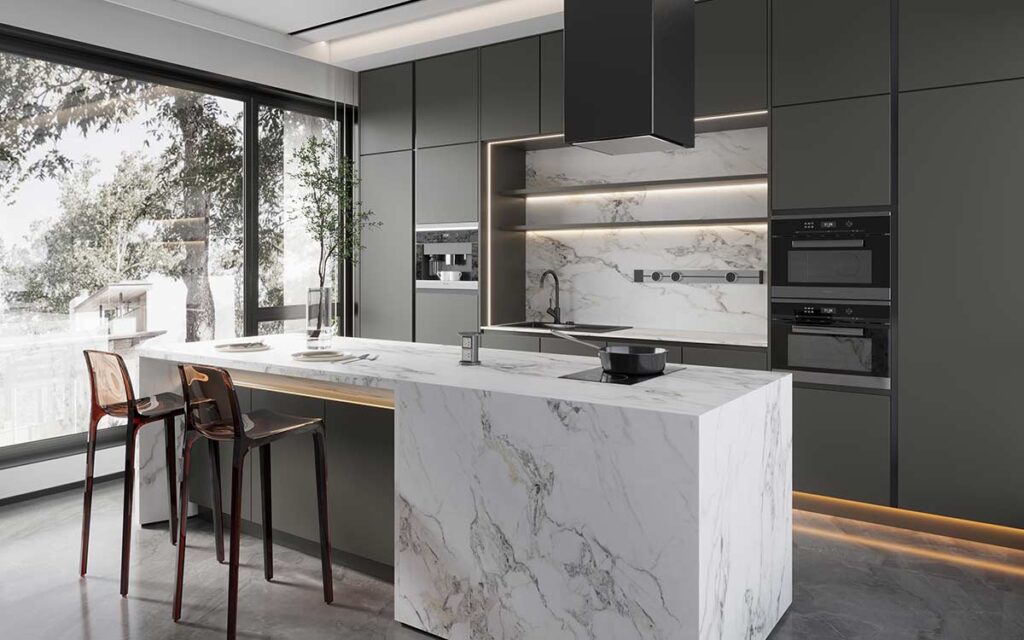
Cost Considerations: Budgeting for Your Dream Island
The cost of a waterfall edge island can vary depending on the size, material, and complexity of the design. Granite and quartz are generally more expensive than laminate or solid surface. The fabrication and installation costs can also vary depending on the contractor and the complexity of the project.
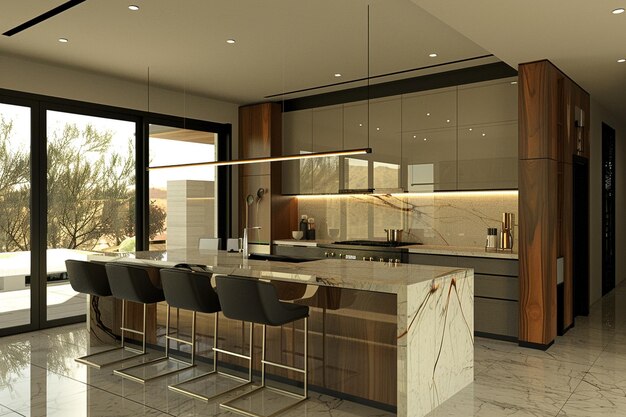
It’s important to get quotes from several contractors before making a decision. Be sure to ask for a detailed breakdown of the costs, including materials, fabrication, installation, and any additional fees.
Consider your budget and prioritize the features that are most important to you. You may be able to save money by choosing a less expensive material or simplifying the design.
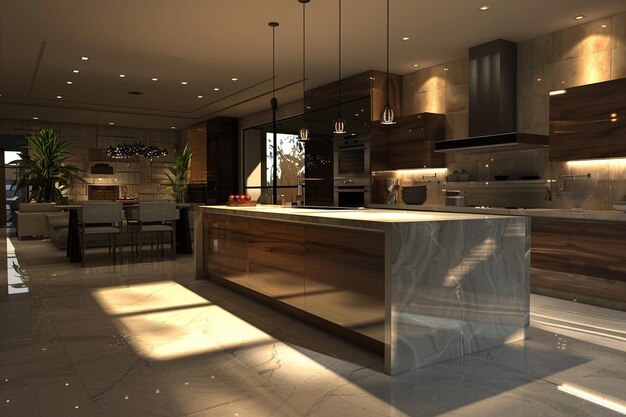
Waterfall Edge Island Kitchens: A Gallery of Inspiration
To inspire your own kitchen renovation, here are a few examples of stunning waterfall edge island kitchens:
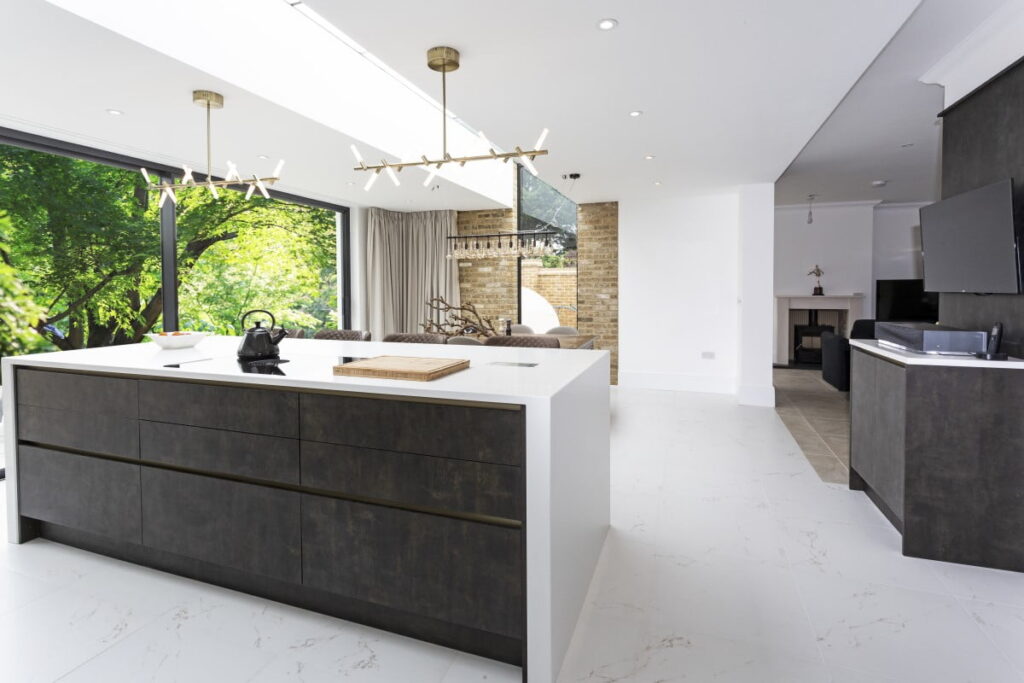
- Modern Minimalist: A sleek white quartz waterfall edge island with handleless cabinets and stainless steel appliances.
- Transitional Charm: A gray granite waterfall edge island with shaker-style cabinets and brushed nickel hardware.
- Rustic Chic: A reclaimed wood waterfall edge island with open shelving and exposed brick accents.
- Coastal Retreat: A blue quartzite waterfall edge island with white cabinets and nautical-inspired decor.
Conclusion: Investing in Timeless Elegance
A waterfall edge island is more than just a kitchen feature; it’s an investment in timeless elegance and enduring style. With careful planning and attention to detail, you can create a kitchen that is both beautiful and functional, a space that you’ll enjoy for years to come. From choosing the right materials to selecting the perfect style, every decision contributes to the overall aesthetic and functionality of your kitchen. So, embrace the allure of the waterfall edge and transform your kitchen into a stunning centerpiece of your home.
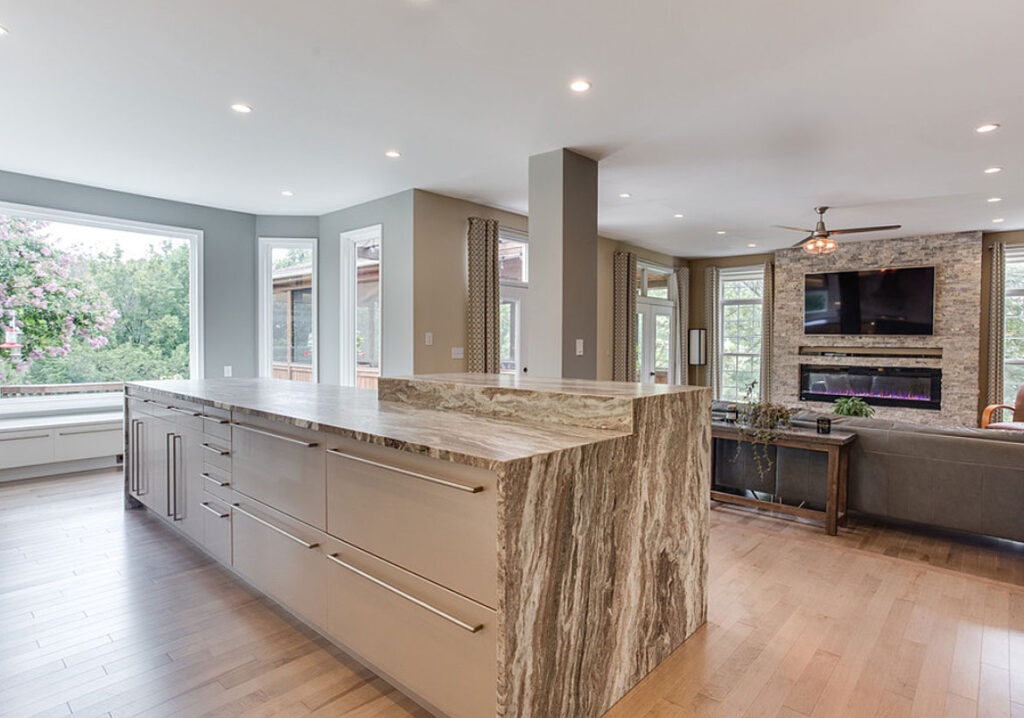
 Nimila
Nimila

